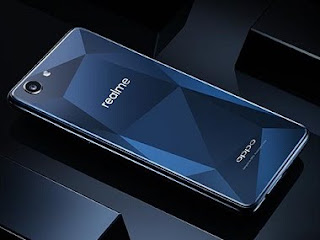There hasn’t been a better time for smartphone customers in India that is now seeing some much-deserved in the mid-range segment. OPPO's new sub-brand RealMe has introduced its first offering - RealMe 1.
This new phone not only challenges the competition but carves a new benchmark in terms of value for money. The new RealMe 1 Diamond Black variant has a glossy diamond cut finish toting fibreglass body and houses an AI-powered chipset. Marching forward as a premium mid-range smartphone, does it have a chance against the Xiaomi Redmi Note 5 Pro? Let's take a closer look.
As good AI gets
The RealMe 1 flaunts a gorgeous 6.0" FHD+ screen with 1080x2280 pixel resolution and an 18:9 aspect ratio. Thanks to the thin bezels on the front, the phone decks an impressive 84.75% screen-to-body ratio. Running the ColorOS 5.0 based on Android 8.1 Oreo, the Fast Unlock with a reaction time of 0.1s to unlock the phone is certainly a delight. The latest Android version features are baked in by default and don’t require an additional update, unlike the Redmi Note 5 Pro.
The phone's AI-powered chipset goes beyond the usual to power the cameras for better photos. For instance, the vivid Bokeh mode will click handsome selfies with 296 facial recognition points to employ best possible AI beauty solutions. In case of a group selfie, the feature still works on the RealMe as opposed to its competitor. Moreover, the AI Scene Recognition feature in the camera app identifies a specific scene and automatically adjusts the key settings - brightness, exposure, and colour.
The AI battery management is a smart feature that learns your usage habits and patterns to shut down the unwanted background apps to conserve power. Yet another area where it gains brownie points over the Redmi Note 5 Pro.
Under the hood, the RealMe 1 packs the new AI-powered octa-core MediaTek Helio P60 chipset. Packing a triple punch - CPU, GPU, and APU to work seamlessly as part of its AI-compute microarchitecture, the chipset has a unique AI module to undertake complex tasks such as facial detection, scene recognition, real-time video previews, and much more. The Helio P60 SoC packs ARM Mali-G72 MP3 GPU that delivers a gaming performance up to 70 percent more than the previous chipsets.
Apart from the AI module, the Helio P60 also supports dual 4G LTE with faster download and uploads. On the other hand, Xiaomi's Redmi Note 5 Pro features a 14nm built octa-core Qualcomm Snapdragon 636 chipset with eight cores having a similar setup as that of Helio P60. When it comes to benchmarks to test the hardware, the RealMe 1 gives the Redmi Note 5 Pro a run for the money. Also, RealMe 1's triple (hybrid) slot allows you to use two 4G SIMs and up to 256GB microSD card at the same time. Whereas, the Redmi Note 5 Pro allows only one 4G SIM in a slot and a 2G/3G SIM in the other.RealMe 1 is available in 6GB and 3GB RAM variants soon to be followed by a 4GB option. The base model packing 3GB of RAM and 32GB storage costs Rs 8,990. While the 4GB variant costs Rs 10,990. Meanwhile, the 4GB+64GB Redmi Note 5 Pro model will cost Rs 14,999.
The 6GB+128GB RealMe 1 priced at Rs 13,990 takes the throne as the new cost-value king in the mid-range segment. At the same time, the top-end Redmi Note 5 Pro model with 6GB+64GB combination costs Rs 16,999. The price difference between all models of both the phones is certainly significant, favouring RealMe.
RealMe not only redefines value-for-money quotient with highly competitive pricing but also pushes the performance envelope further. The first sale of RealMe 1 will take place exclusively on May 25 starting at 12 noon on Amazon India.






